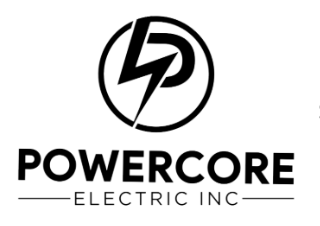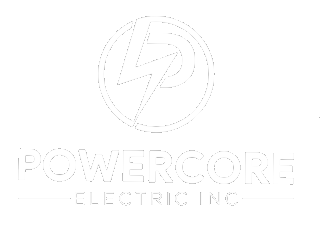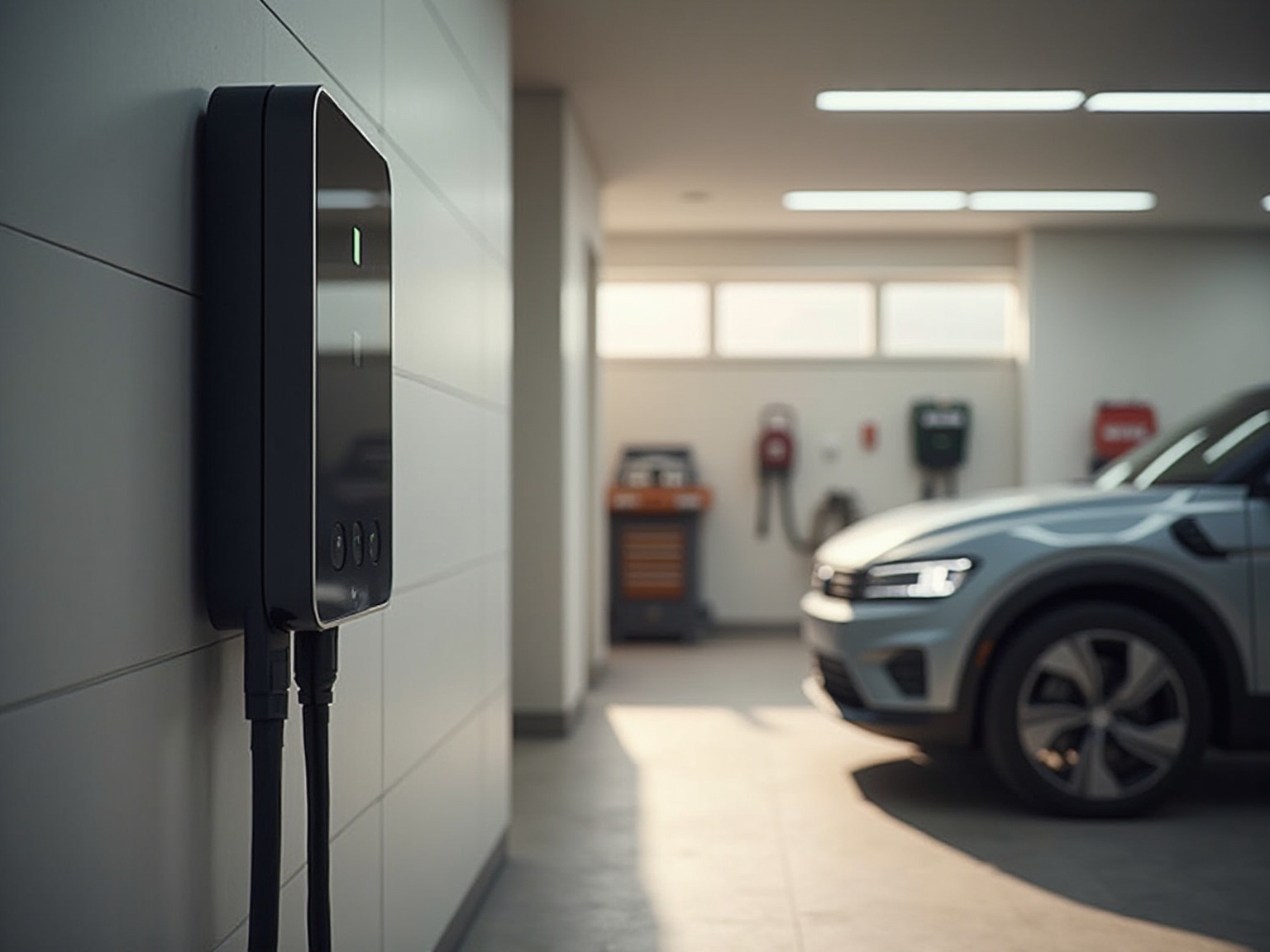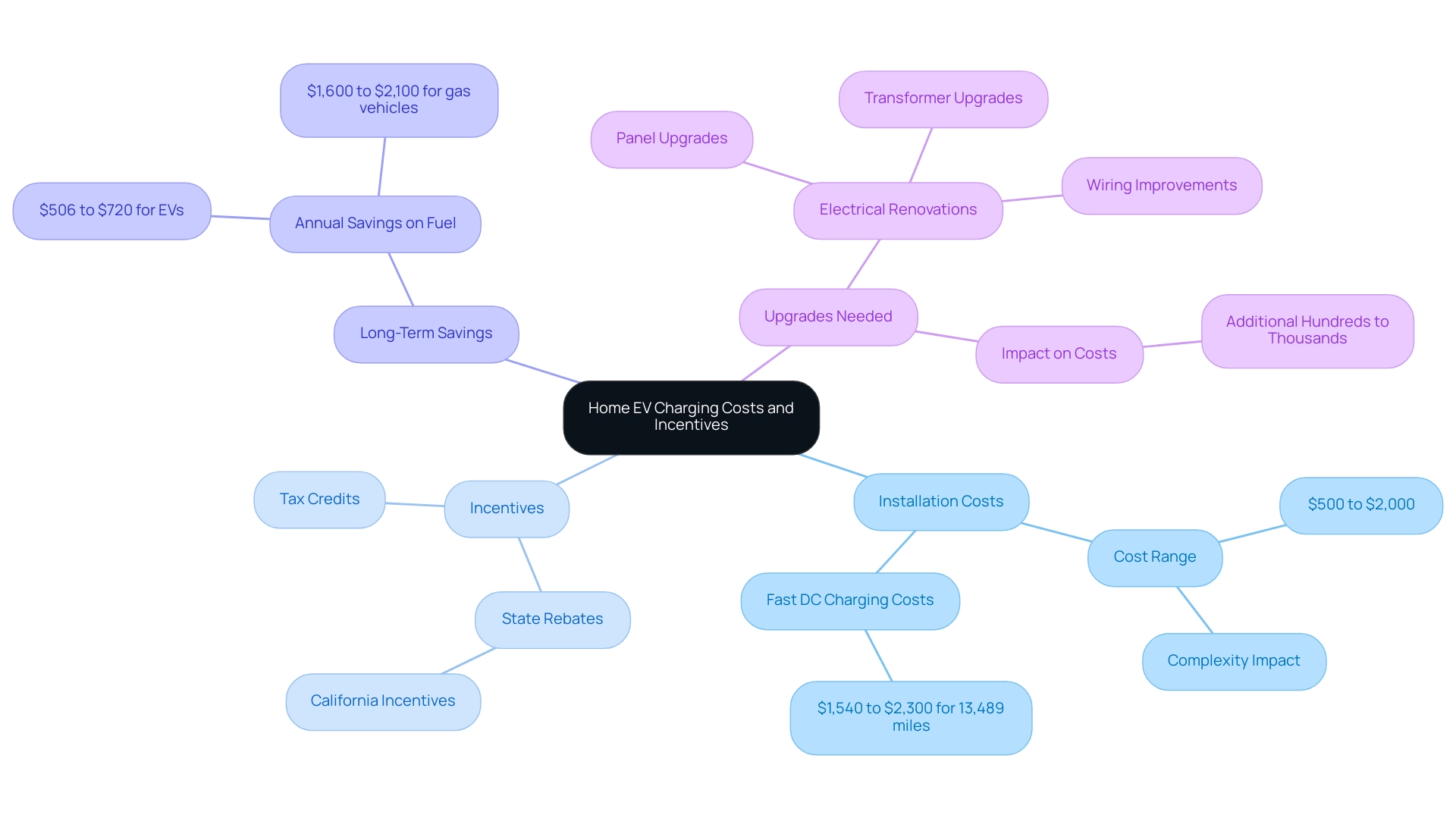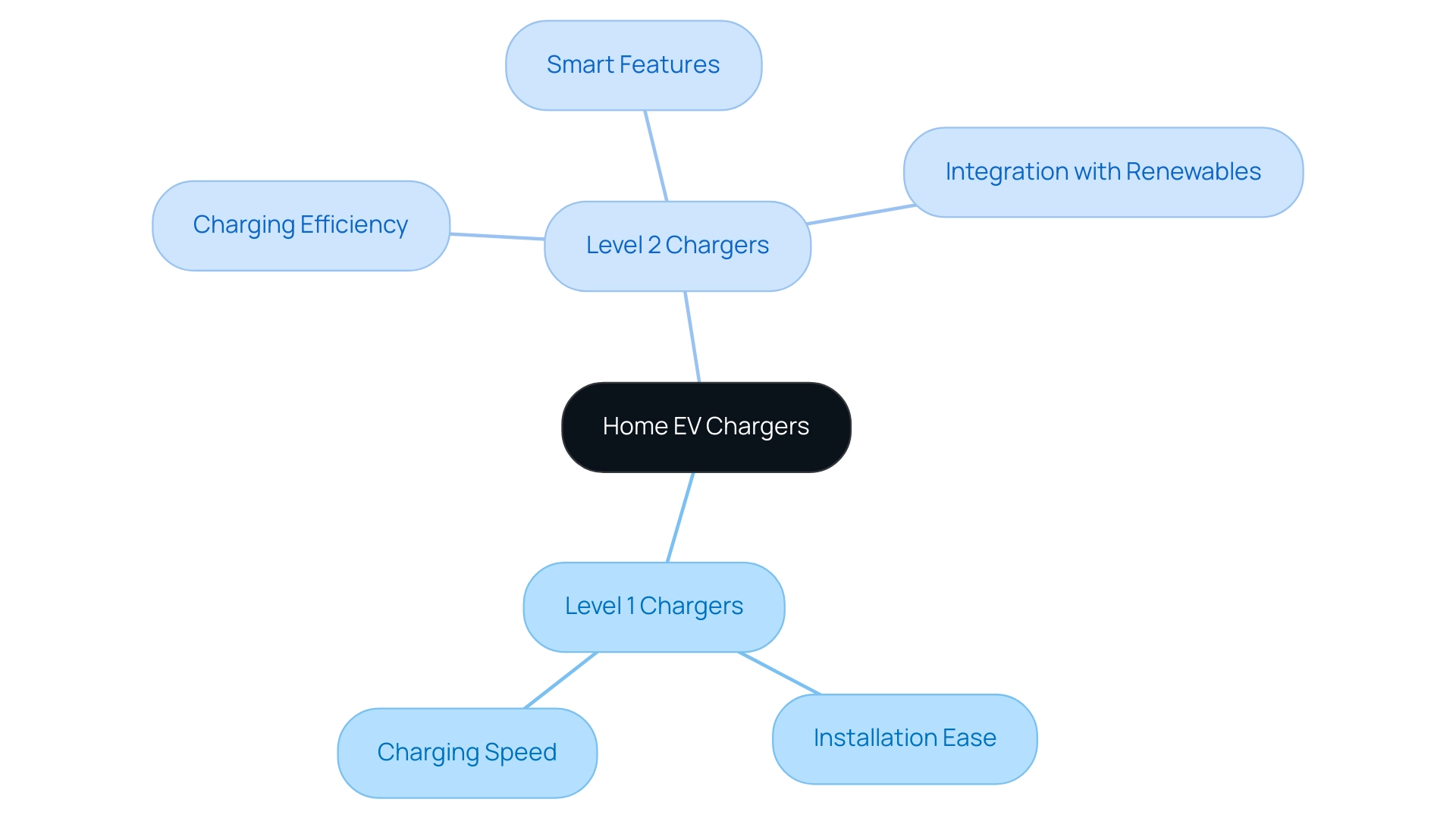Overview
The article focuses on the installation and best practices for domestic electric car charging points, emphasizing the differences between Level 1 and Level 2 chargers and the necessary preparations for a successful setup. It supports this by detailing the advantages of Level 2 chargers for efficiency, the importance of assessing home electrical capacity, and the potential financial incentives available, which collectively guide homeowners in making informed decisions about EV charging solutions.
Introduction
Navigating the world of electric vehicle (EV) home charging can feel overwhelming, especially for those new to the concept of sustainable energy solutions. With the growing popularity of electric vehicles, homeowners are increasingly seeking ways to charge their cars conveniently and efficiently right from the comfort of their garages. This article delves into the essentials of electric vehicle charging stations, exploring the differences between Level 1 and Level 2 chargers, the installation process, and the financial implications of going electric.
Additionally, it highlights the latest advancements in charging technology, as well as available incentives that can help ease the transition to greener energy. By understanding the options and best practices for home EV charging, homeowners can make informed decisions that not only benefit their lifestyle but also contribute to a more sustainable future.
Understanding Electric Vehicle Home Charging Stations
Domestic electric car charging points at home provide the ultimate convenience for EV owners, enabling you to power your vehicle right in your garage. At Powercore Electric Inc., we offer professional installation services for both types of devices to consider: Level 1 and Level 2.
- Level 1 power sources use a standard 120V outlet, making them simpler to set up but slower in replenishing speed, usually needing an entire night to fully recharge your EV.
- Level 2 devices operate on a 240V system and can significantly decrease power-up time, which is why they are the preferred option for most homeowners aiming to maximize efficiency.
With more than 80% of EV operators preferring overnight residential power supply, comprehending these alternatives is crucial for enhancing your electric vehicle‘s performance. Recent developments in power supply technology, including intelligent devices that link to the internet, further improve consumption efficiency, making it simpler than ever to incorporate an effective domestic electric car charging point into a residential power solution.
Furthermore, with thrilling advancements in in Southern California, including the expansion of solar-powered electric vehicle refueling stations and government programs promoting renewable resources, homeowners can gain from dual savings on utility expenses and sustainability. As we enter 2024, the landscape of electric vehicle charging continues to evolve, reflecting a growing commitment to .
We at Powercore Electric Inc. are here to assist you in making the best decisions for your residence, and you can contact us at ryan.serrano@powercoreinc.net or call us at (916) 699-8778 for further details.
Installing Level 2 EV Chargers: Requirements and Best Practices
Installing a domestic electric car charging point at your residence is an exciting step toward sustainable living! In fact, in 2022, 33% of respondents didn’t have a domestic electric car charging point installed at their residence, underscoring the importance of making this upgrade. First things first, you’ll need a dedicated 240V circuit, and depending on your home’s current electrical capacity, this might mean you’ll need an electrical panel upgrade.
It’s always a smart move to consult with a licensed electrician who can evaluate your system and ensure everything aligns with local codes. As the President of Qmerit Network states, “We’re here to make your electrification journey easy and provide a first-class experience with the highest quality of materials and service.” When choosing a power supply, look for one that’s compatible with and consider where it will be most convenient for you—ideally, close to where you typically park your car.
Don’t forget that intelligent power adapters, which connect to the internet for optimized energy usage, can provide various power ratings for different power delivery speeds. If you’re planning to install the charger outdoors, make sure it’s weatherproof to withstand the elements. Adhering to these best practices will prepare you for a smooth charging experience at a domestic electric car charging point, allowing you to appreciate the simplicity and cost savings of residential EV charging.
Additionally, as you explore sustainable options like solar batteries for your home, it’s essential to consider factors such as capacity, lifespan, efficiency, and cost when making your choice. Different types of solar batteries, including lithium-ion, lead-acid, and flow batteries, each have unique benefits and drawbacks. Top recommendations for efficient energy storage include brands like Tesla Powerwall and LG Chem, which are known for their reliability and performance.
Together, we’re contributing to a greener future!
Cost Considerations and Incentives for Home EV Charging
For any eco-conscious homeowner, installing a domestic electric car charging point can be a fantastic investment, with costs typically ranging from $500 to $2,000. The final cost often depends on the complexity of the installation and the specific kind of device you select. It’s worth mentioning that solely depending on Fast DC power for 13,489 miles a year could cost around $1,540 to $2,300, providing a wider view on expenses.
Thankfully, many states, especially California, provide a range of incentives such as rebates and tax credits that can significantly ease the financial burden. As Bailey Corns, a digital content specialist with Santella Electric, emphasizes, “Planning and executing in public areas effectively requires an understanding of the associated expenses,” underscoring the importance of careful financial planning. Additionally, substantial electrical renovations may be necessary to support the increased power demand from domestic electric car charging points.
This could include upgrades to electrical panels, transformers, and wiring, which are crucial improvements for ensuring reliability and safety. These upgrades can notably affect overall project costs, often adding several hundred to a few thousand dollars to the initial investment. It’s also wise to consult with your local utility companies, as they may offer programs designed to assist with the costs of installing a domestic electric car charging point.
Beyond the initial investment, consider the long-term savings on fuel—averaging between $506 to $720 annually for EVs compared to $1,600 to $2,100 for gas vehicles. Furthermore, combining solar power solutions with your EV installation can improve your power management strategy, potentially lowering expenses further and boosting your property’s value. This holistic view not only addresses the costs but also highlights the benefits of adopting sustainable energy practices.
Exploring Different Types of Home EV Chargers
When it comes to a domestic electric car charging point, you have a few different options to consider for , primarily Level 1 and Level 2 models. Level 1 devices are often provided with your EV and are very simple to set up—just plug it into a standard outlet. However, keep in mind that they charge your vehicle slowly, which might not be ideal for everyone.
Conversely, Level 2 devices represent an advancement in efficiency as a domestic electric car charging point, typically requiring only a few hours to completely power your EV, making them a favored option for numerous homeowners.
In the context of global EV infrastructure, New Zealand’s remarkable ratio of 52:1 underscores the significance of having sufficient options for EV owners, which is essential when choosing a device that meets your requirements. Furthermore, progress in infrastructure, like Sweden’s initiative to establish a continuously electrified roadway by 2025, highlights the changing environment of electric vehicle power solutions and their effects on domestic power arrangements. Today’s intelligent devices offer even more benefits.
Imagine being able to monitor your power usage and control charging times right from your smartphone! These intelligent functions not only enhance convenience but also assist you in managing your home’s power usage more efficiently.
When choosing the appropriate device for your residence, including a domestic electric car charging point, you should consider your lifestyle and particular requirements. Just as effective negotiation strategies in transportation planning can lead to better outcomes, making informed decisions about your EV charging investment can significantly enhance your EV experience. Factors like power-up speed, ease of installation, and the potential for integrating your charger with renewable energy sources are all important to consider.
Powercore Electric Inc. provides a variety of services, including the installation of Level 2 EV power stations and solar panel solutions, which can improve your experience while promoting sustainability. By making an informed choice and utilizing Powercore’s services, you can contribute to a more sustainable future.
Preparing Your Home for Electric Vehicle Charging
Before diving into the installation of your EV power station, it’s crucial to assess your home’s electrical capacity. This step helps determine if any upgrades are necessary to support the additional load without risking an overload on your system. Begin by inspecting your primary electrical panel to confirm it can accommodate the requirements of your new device.
In fact, cumulative private investment in medium- and heavy-duty vehicle charging infrastructure in the US reached USD 4.2 billion by the end of 2023, highlighting the growing importance of . The position of your device is also crucial; aim for a spot that’s easily accessible and close to where you park your vehicle. Safety should never be neglected—consider using surge protectors and ensure the power adapter is installed away from any water sources.
As the President of the Qmerit Network highlights, ‘We’re here to make your electrification journey easy and provide a first-class experience with the highest quality of materials and service.’ Engaging a qualified electrician, like our dedicated team at Powercore Electric, is a wise choice to facilitate this preparation, ensuring a seamless installation process and peace of mind as you transition to electric vehicle ownership. Moreover, with public confidence in the U.S. ability to build necessary EV infrastructure being low—only 17% of adults expressing strong confidence—having a personal charger can significantly boost your own confidence in EV ownership.
Concerns about ‘range anxiety’ can be alleviated by having a power station at home, particularly for those who often drive long distances. At Powercore Electric, we’re proud to offer local expertise and unmatched quality craftsmanship, ensuring your charging station not only meets your needs but also contributes to a sustainable future. Our commitment to exceptional service reflects our dedication to the California communities we serve.
Additionally, choosing the right solar battery can improve your power independence. Understanding the different types of solar batteries—such as lead-acid, lithium-ion, and flow—allows you to choose the best option for your needs. Each type has distinct specifications that cater to various energy requirements, which is essential for maximizing your solar energy system.
Customer testimonials reflect our dedication to service excellence: ‘Ryan and his team were great. They were fast, efficient, and stayed on schedule for our solar installation.’ By leveraging available incentives and understanding the long-term benefits of solar battery systems, you can maximize your investments and contribute to a cleaner environment.
Conclusion
Homeowners now have the opportunity to embrace electric vehicle (EV) charging solutions that not only enhance convenience but also promote sustainability. Understanding the differences between Level 1 and Level 2 chargers is crucial for making informed decisions, as each option comes with its unique advantages. Level 2 chargers, with their faster charging capabilities, are becoming increasingly popular, especially as technology evolves to include smart features that optimize energy consumption.
The installation process is an important step to consider, ensuring your home’s electrical system can support the new charger. Engaging with licensed electricians can help navigate this process smoothly, from assessing electrical capacity to adhering to local codes. Additionally, understanding the financial implications—including installation costs and available incentives—can significantly ease the transition to electric vehicle ownership. With potential savings on fuel and the promise of government rebates, the long-term benefits are compelling.
As the landscape of home EV charging continues to evolve, integrating solar energy solutions can further enhance the sustainability of your charging practices. By selecting the right charging station and considering renewable energy options, homeowners can not only reduce their carbon footprint but also enjoy the convenience and cost savings that come with electric vehicle ownership. Embracing this shift towards greener energy is not just a personal choice; it’s a step towards a more sustainable future for everyone.
